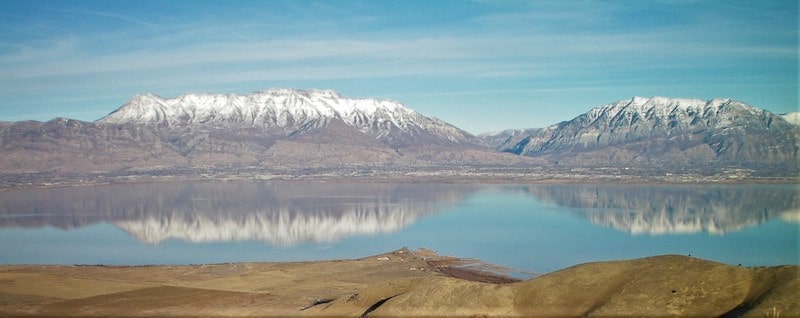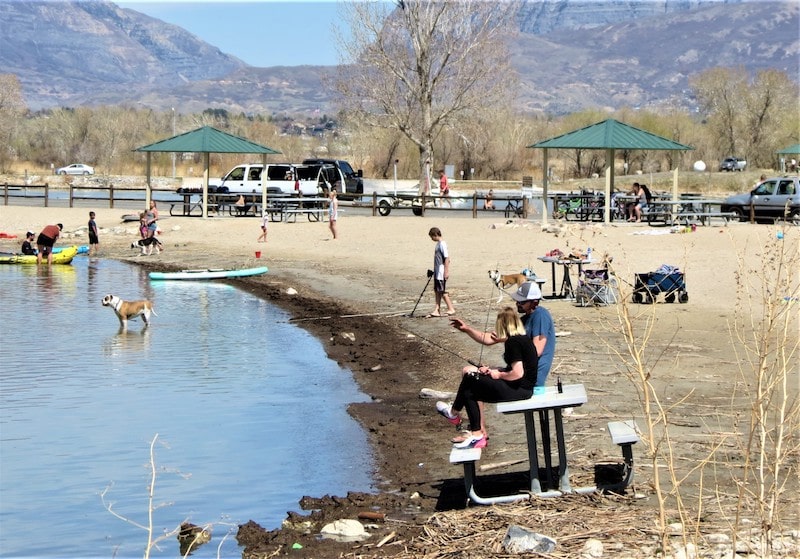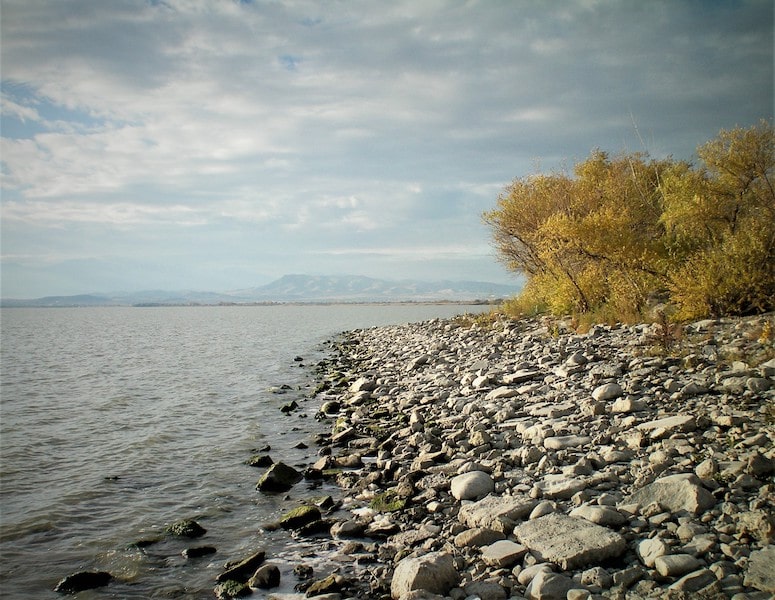
Utah’s public has long considered Utah Lake to be highly polluted. Once known as the largest natural lake west of the Mississippi, it is surprising just how unpolluted what later became a water storage reservoir really is.
Extremely unique in the world, Utah Lake is 22 miles long by 15 miles wide, with an average depth of less than 10 feet.
Because it is so shallow, every time the wind blows, the wave action stirs up the very loose bottom, turning the lake’s water muddy, thereby reinforcing the public’s common and long-held misconceptions about pollution. Surprisingly, the health of Utah Lake’s waters and fish is counterintuitive to the public perception.
Oh sure, there have been a few harmful algal blooms (HABs) in areas protected from the wind, especially inside the lake’s various marinas, or in the extremely shallow Provo Bay. But surprisingly, it is actually this “muddiness” of the water that has most protected the lake’s water quality and fish. Operating like a shade umbrella, the suspended silt (mud) helps to reduce the penetration of sunlight necessary to produce those kinds of algae that can harm us, our dogs, and all the fish in the lake.
I find the most significant evidence of the lake’s longtime health is the fact that the ten commonly introduced sport and food fishes in the lake have only rarely been negatively influenced by the off-flavor compounds so commonly produced by HABs.

As an avid Utah Lake fisherman for more than 40 years, I have found the lake’s fish to be great table fare year-round, and have never found any of its food fishes to have poor flavor or texture so common to many of Utah’s other fisheries, especially later in the year.
The Geneva Steel plant on the western shoreline of Utah Lake in Lindon may have polluted the lake and its fish over many decades. That facility was deemed the least polluting steel plant in America, however, the plant may have discarded some electrical transformers that leaked toxic PCBs into the water table that still find their way into the lake and its fish.
Today, the Utah Department of Environmental Quality does not recommend the consumption of common carp and channel catfish by young children and pregnant women. PCBs are largely found in fatty tissues that can be trimmed or cooked away.
Some readers might know about an ongoing Endangered Species recovery program ― the June Sucker Recovery Implementation Program (JSRIP), to save a unique native fish species only found in Utah Lake from extinction. Early in the state’s history, June suckers were harvested for food by local Indians and Mormon pioneers.
Later, a dam and pump house were installed at its Jordan River outlet, turning the lake into a reservoir with more radical water level fluctuations. The original delta-oriented tributary streams were highly modified, preventing this rare species from successfully reproducing.

I have represented the public on the JSRIP for the past 20 years, witnessing the artificial culture and stocking of their young in the lake, and more recent efforts to restore some of the delta characteristics of the lake’s two largest tributary streams, Hobble Creek and the Lower Provo River.
Although these investments have cost taxpayers millions of dollars, I agree with experts that those investments are likely to benefit the sucker and all the sport fishes in the lake. These and other efforts have finally contributed to the recent successful downlisting of the species to “threatened” status instead of “endangered”.
A more controversial effort to save the sucker was the huge, ongoing and expensive removal of carp from the lake. Although the common carp population had grown to entirely overwhelm the lake, there was never any real evidence that the carp had contributed to significant declines in the sucker. In fact, the well-adapted June sucker has always outcompeted the carp in the lake’s largely open, featureless waters.
This was especially evident as the carp were historically starving to death, resulting in stunted growth to a mere 4 ½ pound average each ― the smallest in Utah! Although the JSRIP has financed the removal of three quarters of the adult carp over the decades, those remaining have doubled in size to more successfully reproduce, essentially replacing those removed.
As a longtime advocate and avid angler of Utah Lake, I recommend not believing the “fake news” about Utah’s gem, Utah Lake. All ten sport and food fish are great to catch and eat any time, HABs are rare out in the lake’s open waters, and carp have little to do with ultimate survival and well being of the lake’s only remaining native threatened fish.
Even with Utah’s extended drought that will undoubtedly result in very low future Utah Lake water levels, I recommend that everyone check out all of the great recreational opportunities on the huge, largely unpolluted lake right here in our own backyard.
Dan Potts is the Outdoor Interests Representative for the June Sucker Recovery Implementation Program.
MORE ABOUT UTAH LAKE
Terror at the Bottom of The Lake
The Endangered Utah Lake June Sucker
Spring White Bass Fishing in Utah Lake
Subscribe to Utah Stories weekly newsletter and get our stories directly to your inbox


